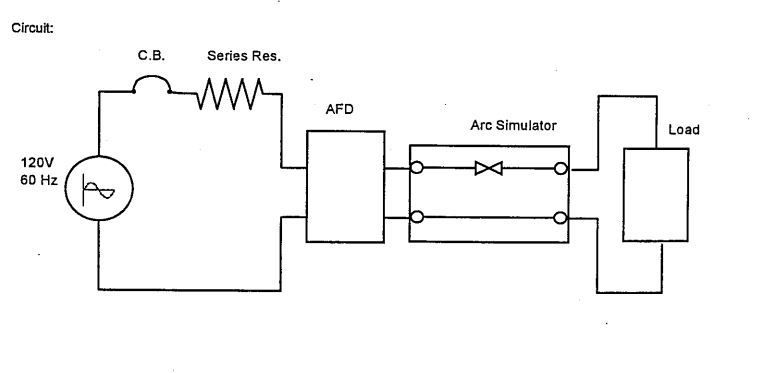Again, Vour kind comments are appreciated. The following is another one of my long winded posts but never the less there may some merit.
Thanks! Ha vent forgotten about this post, was busy. And, I disagree, you post does have merit. I like your input

My concern about arc faults is that term is not specific enough, a bit ambiguous.at best.
So often an arc will not draw enough current to approach the magnetic trip pickup of a TM breaker.
I agree. Even hard short circuits sometimes don't trip breakers magnetically, especially older breakers that often have a 32x magnetic trip. FPE, Bulldog and some Zinsco breakers do not have any magnetic trip fwiw.
And I am also to understand that the current goes down as the impedance of the arc increases the longer it persists. Am I correct? Arcs are not a good thing as they are unpredictable often not conducting enough current to trip a TM breaker. And to draw enough current trip a breaker thermaly would be would not be reasonable.
You are 100% correct. Much of it is the fact an arc or sputtering fault does not draw a sinusoidal current. Current will rise and fall, and arcing will often re-strike at the peaks and troughs (draw current) but extinguish when rising from or falling toward the zero crossing in a sine wave. This results in a high peak current, but low RMS current. The bimetal strip in a breaker relies entirely on I2R RMS heating, so in such a condition the bimetal can take a very long time to heat up enough to trip. In some cases the bi metal may even see the current as a mild overload or even normal load. Incident energy at the fault increases astronomically. Magnetic trip on the other hand does not rely on RMS heating, so tripping is without delay.
The only place in the NEC that I can think of that time tyo address faults is art 430 with mag only breakers as a part of a combo starter.
The OLR element/adjustment is a thermal element that protects the motor from an overload condition. The mag only breaker is described to provide ground fault protection interesting enough ref art 430-52. Mag only breakers in this application are referred to as MCPs, motor "circuit" protects who's job is to protect the motor circuit. MCPs were originally invented by Westinghouse to deduct the incidence of fires as a result of a failing motor which the commonly used fuse did a very poor job of preventing. Knowing that the LRA of the common motor is about 7x the FLA and that the inrush magnetizing current may be as much a 13x the FLA if we adjust the mag pickup just outside of those currents as to not cause nuisance tripping we can get close enough to a point where should one one the motor winding fasil and go to ground the fault can be sensed by the MCP and trip preventing the arc from escalating into a phase to phase fauld an a catastrophic failure.
Perfect real world example. The same concept if applied to branch circuits will do the same as a branch/feeder AFCI. A study should be undertaken to factor in what is the greatest inrush of appliances and electronics that are plugged into general use circuits.
I would !like to see this concept used in branch circuit protection but it is of my opinion that it would be difficult at best unless the mag mag calibration be reviewed.
I agree, but determining what minimum magnetic trip level is suitable will be easier, by far, then the AFCIs studies undertaken. In fact one poster claims that one company alone already invested at least $10,000,000 in AFCI development. Certainly that can pay for magnetic trip research several times over:
http://forums.mikeholt.com/showthread.php?t=166586&page=12&p=1623075#post1623075
I can tell you this, the cost of development and continued development of AFCI's by only one company ( I wont mention) is well over 8 figures. Thats at the least $10,000,000.00 on a single product. Thats testing, development and so on.
What it boils down to is load center breaker have to be made very , very cheaply. As such it has been my experience with the product that I supported that they are made in groups such as 15, 20, and 30at have the same mag pickup because it would be cost prohibited to calibrate them separately.
The cost to add a solenoid coil to each 15 and 20amp breaker would increase the cost by a dollar or two, certainly cheaper then AFCIs. Breakers used outside of the US and Canada are all equiped with a solenoid coil that lowers the magnetic trip to about 5 times the handle rating. Type C and D are avalible for inrush applications, but type B (5x) is used on nearlly all general use circuits.
The only manufacturer that I'm aware of that has reduced the mag calibration of their standard breaker is SqD while providing an optional highmag, the highmag I found to be the same as the C-H standard breaker, C-H offering an optional lowmag similar to SqDs std breaker which is something your mother never taught you I bet.
I do think that tasking a good look at the mag calibration of the 3/4 and 1" per pole breakers should be evaluated.
I agree, this concept should be reviewed and applied to all breakers. Take a look at what everyone else does

:
https://www.google.com/search?q=dis...vEf0o8tI3zF9t&q=disjoncter solenoide &imgrc=_


